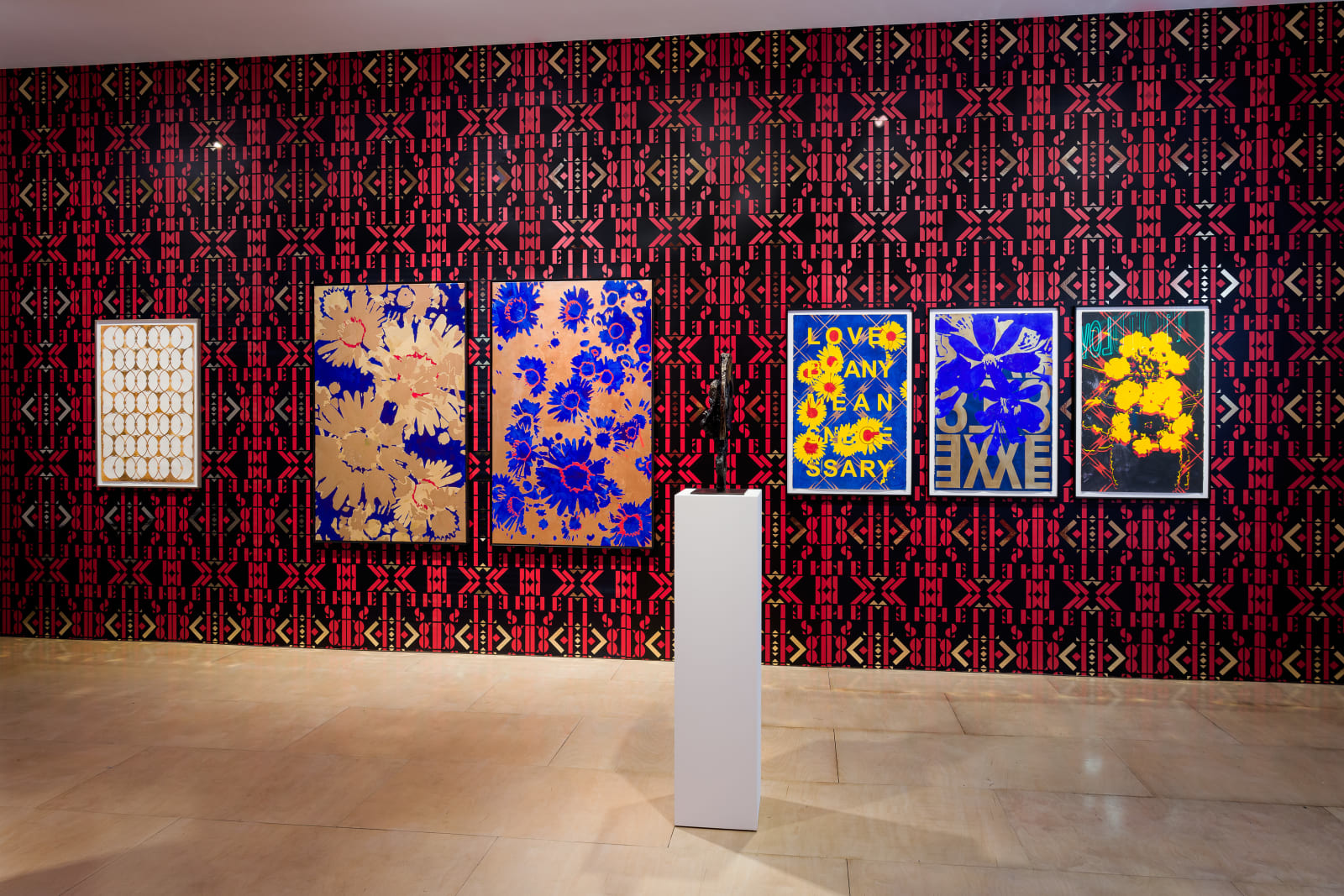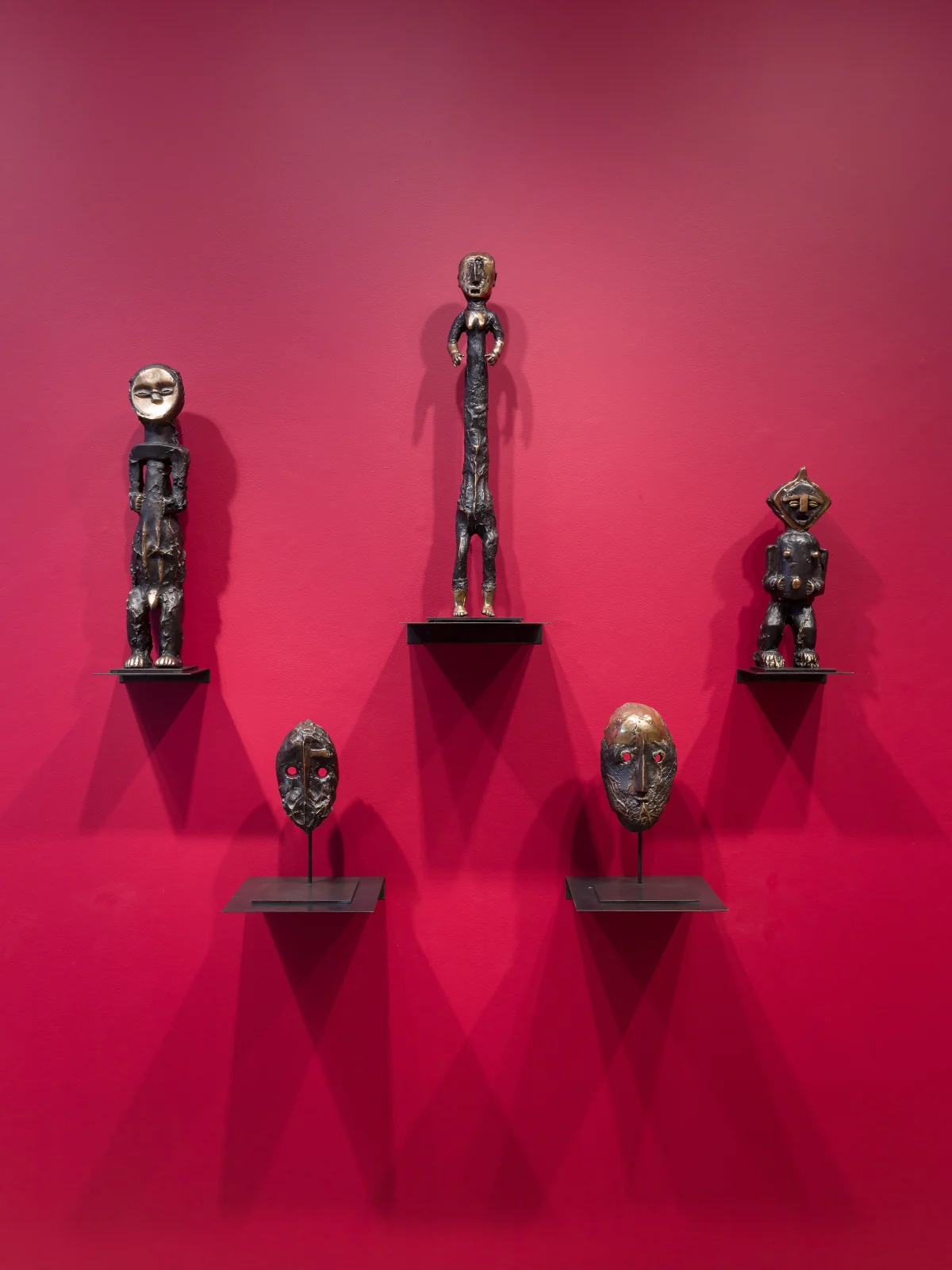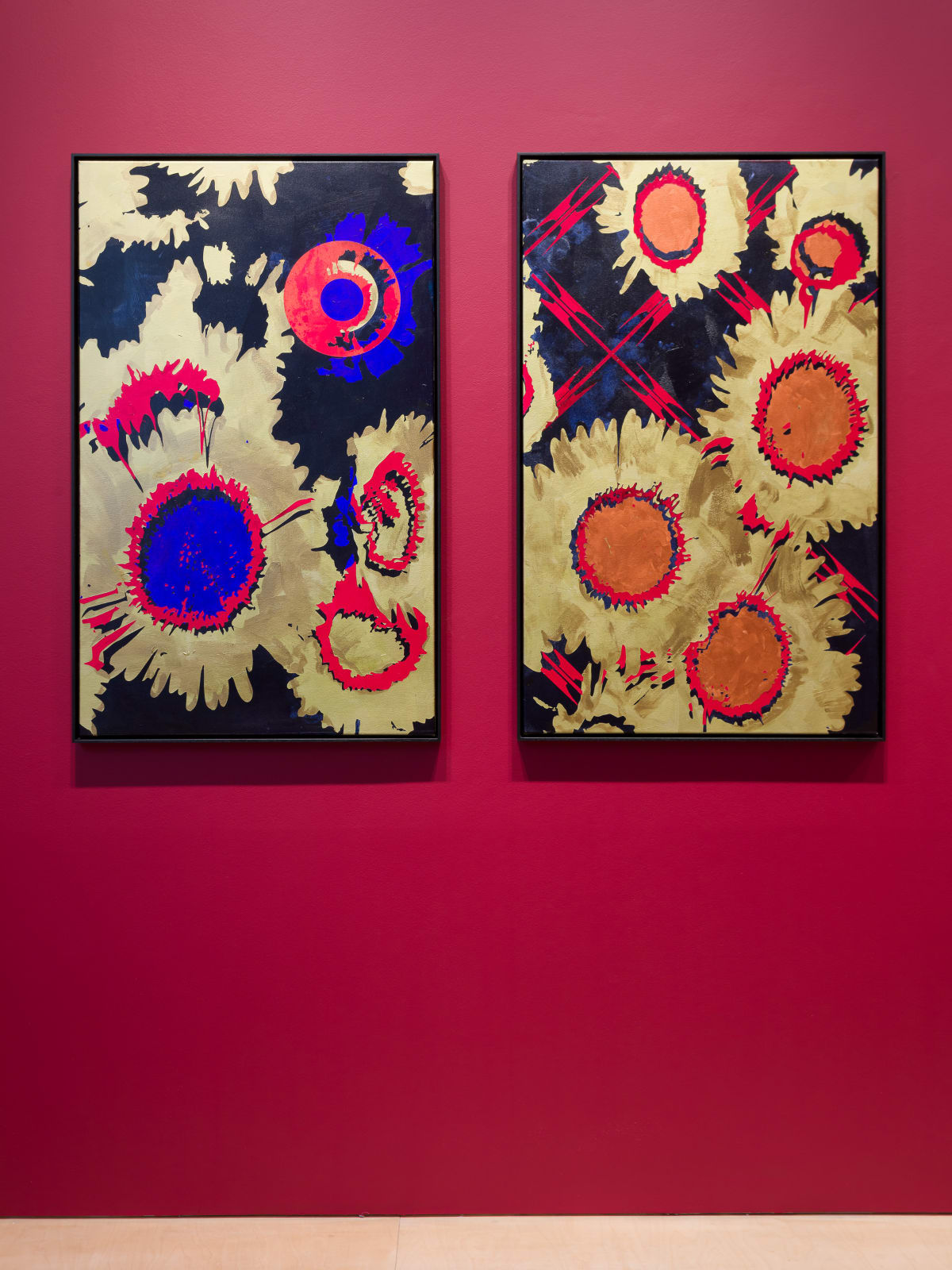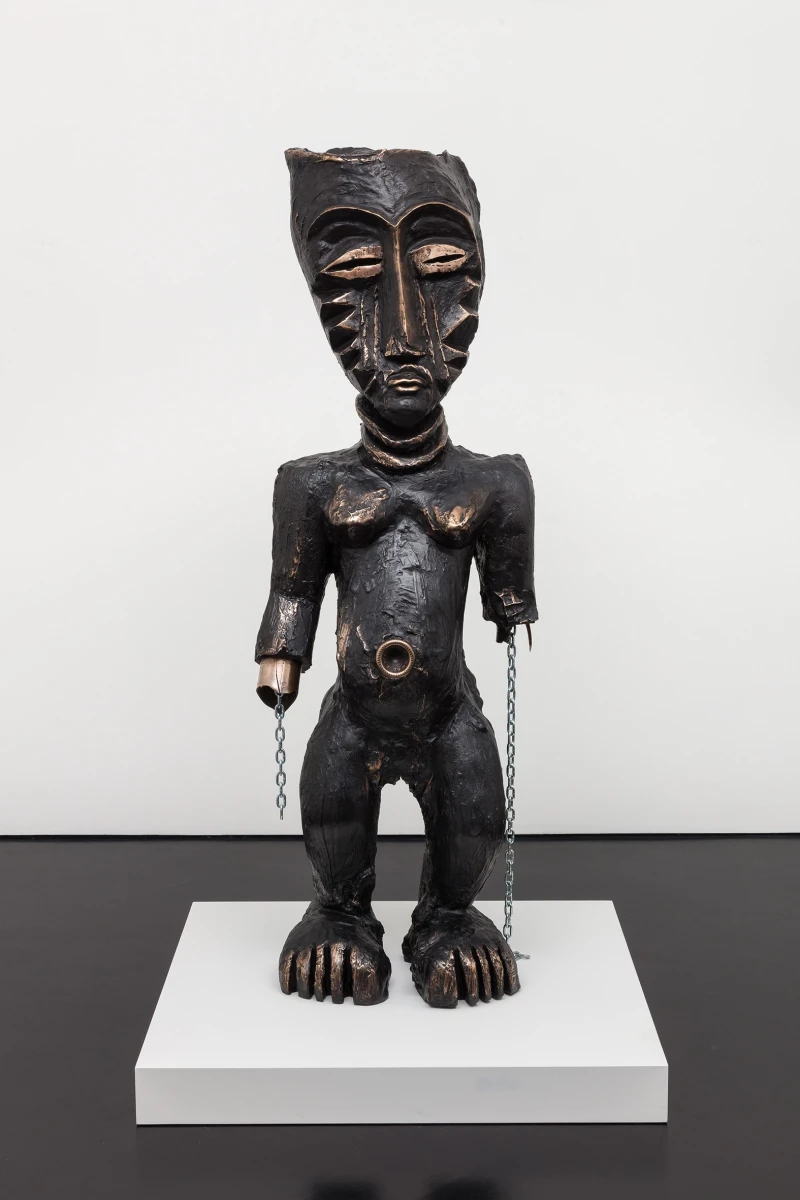
Kendell Geers: Love, By Any Means Necessary
Overview
Geers describes this exhibition as "a resurrection of spirit through an invocation of nature.
The title of the exhibition derives from the protest movements of the 1960s and is inspired by a statement by Malcolm X about the use of violence in political liberation. At the centre of the exhibition is a large-scale black and white neon spelling out ‘REVOLUTION' in reverse so that the hidden word ‘LOVE' reads forwards. The artist explains, "In the wake of more than a century marked by affluence, we now stand at a dangerous crossroads... The Land Rights Claims in South Africa, the fence along the USA border, abortion rights in Alabama, the European refugee crisis, the ‘gilets jaunes', Brexit and climate change are not separate problems, but all simply facets of one larger problem of disintegration, dissolution, alienation, denial, segmentation, prejudice and bigotry in the name of profit." In today's highly charged socio-political climate perhaps the most subversive act of all is to love. In the gallery window another neon spells out the letters FUC KING HELL. This play on words is characteristic of Geers' use of language in his practice. A wordsmith and a trickster, in this exhibition Geers aims to put love back into the revolution "by any means necessary".
The title of the exhibition derives from the protest movements of the 1960s and is inspired by a statement by Malcolm X about the use of violence in political liberation. At the centre of the exhibition is a large-scale black and white neon spelling out ‘REVOLUTION' in reverse so that the hidden word ‘LOVE' reads forwards. The artist explains, "In the wake of more than a century marked by affluence, we now stand at a dangerous crossroads... The Land Rights Claims in South Africa, the fence along the USA border, abortion rights in Alabama, the European refugee crisis, the ‘gilets jaunes', Brexit and climate change are not separate problems, but all simply facets of one larger problem of disintegration, dissolution, alienation, denial, segmentation, prejudice and bigotry in the name of profit." In today's highly charged socio-political climate perhaps the most subversive act of all is to love. In the gallery window another neon spells out the letters FUC KING HELL. This play on words is characteristic of Geers' use of language in his practice. A wordsmith and a trickster, in this exhibition Geers aims to put love back into the revolution "by any means necessary".
Geers also draws inspiration from the contradictions inherent in his identity as an African artist. Describing himself as an ‘AniMystikAKtivist', he weaves together diverse Afro-European traditions, including animism, alchemy, mysticism, ritual and a complex socio-political activism laced with humour and irony. A large bronze female figure stands like a sentinel in the gallery window. Her hands have been cut off and replaced with shards of glass. From each broken arm a chain dangles, resembling shackles from which she has liberated herself. A group of smaller bronze masks are influenced by Kota reliquaries, the first sub-Saharan African artworks to be exhibited in the West, examples of which were on display during Pablo Picasso's famous visit to Musée d'ethnographie du Trocadéro, Paris in 1907. In one of these works Geers has used a cast of his own mouth to close the mouth of the sculpture, bestowing it with "a kiss where art meets life".
Geers describes this exhibition as "a resurrection of spirit through an invocation of nature." A new series of paintings and works on paper, ‘Les Fleurs du Mal', is titled after a volume of poetry by Charles Baudelaire. Charged with an intense longing and melancholia, these paintings depict cut flowers whose petals simultaneously take the form of bullet holes or wounds. Severed from their roots and invoking a memento mori, the beauty of these blossoms lies in their fragility. The repetition of an emblem in these works is also inspired by Dutch wax batik fabrics, whose brightly coloured patterns are a symbol of African identity yet are designed in Indonesia and produced in the Netherlands. The investigation of repetitive patterns is also found in the artist's wallpaper that covers the gallery wall and teases the viewer's peripheral vision.
Geers creates work that aims to disrupt commonly accepted moral codes and principles. At the 1993 Venice Biennale he officially changed his date of birth to May 1968, a momentous year in world history for human liberation and equality. Employing a wide range of references- from the realms of history of art, pornography, iconography and kitsch- his work reveals razor-sharp humour that plays with the viewer's repulsion and ridicules racial or religious stereotypes.
Geers participated in Documenta 14 in 2017 and Documenta 11 in 2002 at Kassel, Germany. A major retrospective of his work curated by Okwui Enwezor was held at Haus der Kunst, Munich in 2013. Other notable solo exhibitions include Rua Red Dublin (2019); Chateau Blandy-les-Tours, Melun, Paris (2012); Musée d'Art Contemporain de Lyon, Lyon (2009); Saint Louis Art Museum, Saint Louis, Missouri (2009) and Contemporary Arts Center, Cincinnati, toured to Aspen Art Museum, Aspen (2005).
Geers' work was included in the Venice Biennale in 2019, 2007 and 1993. Major group exhibitions include ‘Believe', MOCA, Toronto (2018-2019); ‘The Road to Justice', MAXXI, Rome (2018); ‘Bric-à-Brac - The Jumble of Growth', Galleria Nazionale d'Arte Moderna, Rome (2018); ‘Person of the Crowd: The Contemporary Art of Flanerie', The Barnes Foundation, Philadelphia (2017); ‘All Things Being Equal...', Zeitz MOCCA, Cape Town (2017); ‘The Divine Comedy: Heaven, Hell, Purgatory revisited by Contemporary African Artists', Frankfurt MMK, Frankfurt; touring to SCAD Museum of Art, Savannah, Georgia; Smithsonian National Museum of African Art, Washington; Museo Nacional Centro de Arte Reina Sofia, Madrid; Correo Venezia, Venice; Hayward Gallery, London (2014-2015); ‘The Progress of Love', The Menil Collection, Houston, Texas (2012-2013) and ‘Contemplating the Void', Solomon R Guggenheim Museum, New York (2010).
Geers' works are held in the permanent collections of public institutions including Centre Pompidou, Paris; MAXXI, Rome; Magasin III Museum & Foundation for Contemporary Art, Stockholm; Johannesburg Art Gallery, Johannesburg; Iziko South African National Gallery, Cape Town; Art Institute of Chicago, Chicago and ArtPace, Austin.
For further information please contact info@stephenfriedman.com.
For press enquiries, please contact Carlotta Dennis Lovaglio at carlotta@scott-andco.com.
Geers describes this exhibition as "a resurrection of spirit through an invocation of nature.
Selected Artworks
Installation Views





















